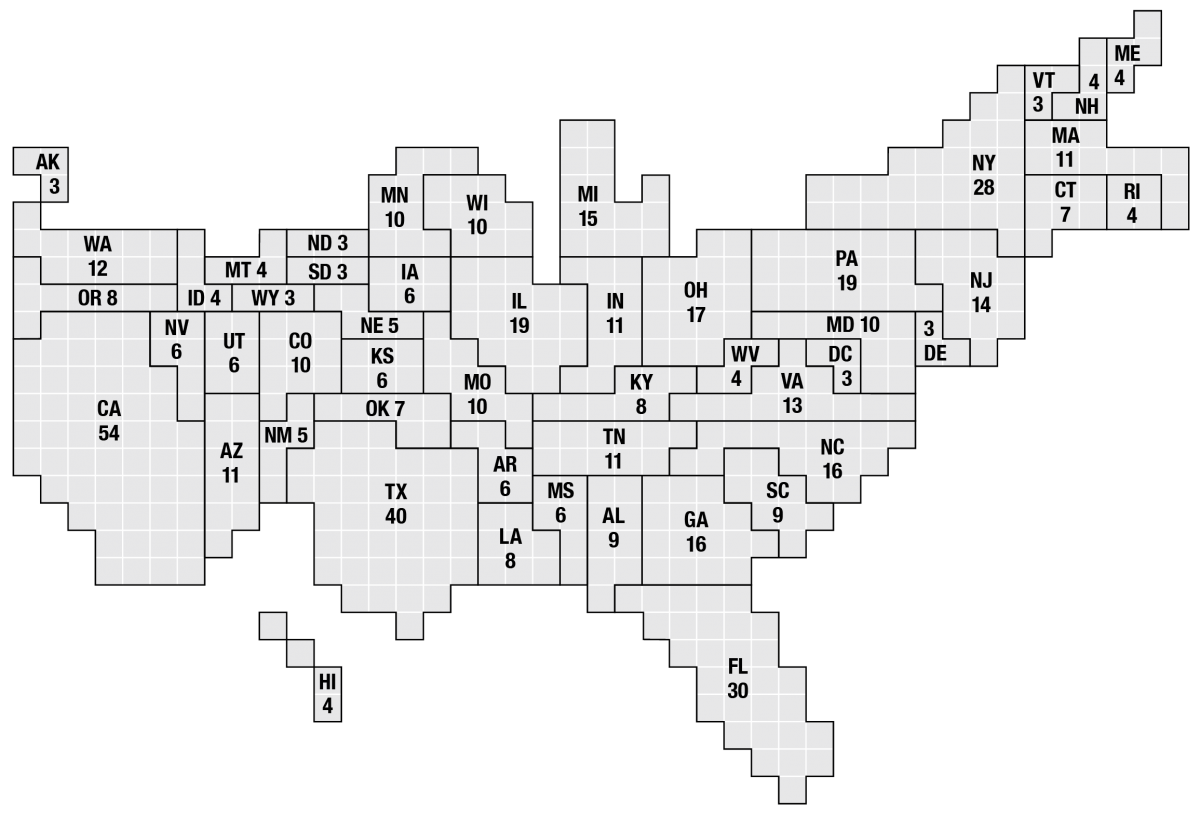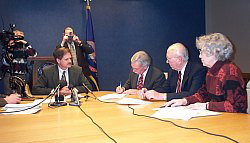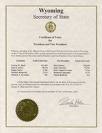The U.S. Constitution specifies that the President and Vice President of the United States are to be chosen every four years by a small group of people (currently 538) who are individually referred to as “presidential electors” and collectively referred to as the “Electoral College.”
The Constitution specifies that each state is entitled to one member of the Electoral College for each of its U.S. Representatives and U.S. Senators. Today, there are a total of 538 electoral votes in the Electoral College. This total of 538 corresponds to the
- 435 U.S. Representatives from the 50 states, plus
- 100 U.S. Senators from the 50 states, plus
- 3 members of the Electoral College to which the District of Columbia became entitled under the 23rd Amendment (ratified in 1961).
Every 10 years, the 435 U.S. Representatives are reapportioned among the states in accordance with the latest federal census, thereby automatically reapportioning the membership of the Electoral College among the states. The map below shows the number of electoral votes for each state, according to the 2020 census.

Each political party nominates its own candidates (typically long-standing party activists, officeholders, or donors) for the position of presidential elector. In most states, the nominees for the position of presidential elector are nominated by district and state conventions of each separate political party in the state. There are a variety of other methods used. For example, in Pennsylvania, the presidential candidate himself or herself directly nominates their presidential electors.
Members of the Electoral College are elected by each state and the District of Columbia on the Tuesday after the first Monday in November in presidential election years. In 2020, Election Day is Tuesday November 3, 2020. This date is set by a federal law passed by Congress, and may only by changed by Congress.
Forty-eight of the 50 states elect their presidential electors using the so-called "winner-take-all" rule -- that is, 100% of the state's presidential electors are awarded to the candidate who received the most popular vote inside each state. In Maine and Nebraska, one presidential elector is elected from each of the state's congressional districts, and two presidential electors are elected on the basis of the statewide vote. For example, in 2008, Nebraska's electoral votes divided 4-1, with McCain receiving four and Obama receiving one (as a result of his winning Nebraska's 2nd congressional district). In 2016, Maine's electoral votes divided 3-1, with Clinton receiving three and Trump receiving one (as a result of his winning Maine's 2nd congressional district in the northern part of the state).
The 538 members of the Electoral College cast their votes for President and Vice President in meetings held in the 50 state capitals and the District of Columbia in mid-December of presidential election years. If all 538 electors are appointed, 270 electoral votes (i.e., a majority of 538 members of the Electoral College) are required to elect the President and the Vice President.

The date for the meeting of the Electoral College is established by federal election law (United States Code. Title 3, chapter 1, section 7). In 2020, the designated day for the meeting of the Electoral College is Monday, December 14. This date is set by a federal law enacted in 1934, after the 20th Amendment changed the date for the presidential inauguration from March 4 to January 20.

The people have the right, under the U.S. Constitution, to vote for U.S. Representatives. The 17th Amendment (ratified in 1913) gave the people the right to vote for U.S. Senators (who were elected by state legislatures under the original Constitution). However, the people have no federal constitutional right to vote for President or Vice President or for their state’s members of the Electoral College. Instead, the Constitution (Article II, section 1, clause 2) provides:
“Each State shall appoint, in such Manner as the Legislature thereof may direct, a Number of Electors, equal to the whole Number of Senators and Representatives to which the State may be entitled in the Congress….”
As the U.S. Supreme Court observed in the 1892 case of McPherson v. Blacker:
“The constitution does not provide that the appointment of electors shall be by popular vote, nor that the electors shall be voted for upon a general ticket, nor that the majority of those who exercise the elective franchise can alone choose the electors.” …
“In short, the appointment and mode of appointment of electors belong exclusively to the states under the constitution of the United States.”
In 2000, the U.S. Supreme Court in Bush v. Gore reiterated the principle that the people have no federal constitutional right to vote for President or Vice President or for their state’s members of the Electoral College..
“The individual citizen has no federal constitutional right to vote for electors for the President of the United States unless and until the state legislature chooses a statewide election as the means to implement its power to appoint members of the Electoral College.”
The Constitution’s delegation of power to the states to choose the manner of selecting their members of the Electoral College is unusually unconstrained. It contrasts significantly with the limitations contained in the Constitution on state power over the manner of conducting congressional elections (Article II, section 4, clause 1).
“The Times, Places and Manner of holding Elections for Senators and Representatives, shall be prescribed in each State by the Legislature thereof; but the Congress may at any time by Law make or alter such Regulations….”
In a 1919 case involving a state statute entitled “An act granting to women the right to vote for presidential electors,” the Maine Supreme Judicial Court wrote (In re Opinion of the Justices):
“[E]ach state is thereby clothed with the absolute power to appoint electors in such manner as it may see fit, without any interference or control on the part of the federal government, except, of course, in case of attempted discrimination as to race, color, or previous condition of servitude….”
